
Since the early 1800s, Jews have lived and worked in the Hoosier State. Indiana’s Jewish population has fluctuated over time, with immigration increasing at the turn of the twentieth century. As Jewish immigrants arrived in the United States, many settled in the Midwest, as new factories and businesses sought laborers. In comparison to their treatment in the South, the Midwest was more accepting of immigrants than other parts of the country. On December 22, 1907, the Indianapolis Star reported that upon arriving in Louisiana to look for work, a group of thirty immigrants from southern Europe were “attacked, beaten and robbed” not once, but twice. Such violence in the South was common and, therefore, encouraged immigrants to stay in the North and Midwest.
Jewish identity in America has changed over time. At times of early settlement and migration, Jewish communities were comprised of a variety of cultures, traditions, and practices. Early Jewish immigrants were mostly Ashkenazi Jews from Germany while immigrants who arrived later included Sephardic Jews from southern Europe and other Ashkenazi Jews from eastern Europe.[i] In the early twentieth century, as native-born Americans began to scrutinize and resist immigration, established Ashkenazi Jews began to push for the assimilation of Jewish immigrants in attempts to mitigate waves of antisemitism. As part of this initiative, Jewish philanthropic organizations provided the newcomers with aid and employment opportunities, forever changing the cultural landscape of the United States as philanthropic organizations relocated immigrants from New York to cities across the country like Indianapolis, Evansville, and Fort Wayne. While the newcomers were aided by organizations like the Jewish Federation, these same organizations often encouraged the erasure of cultural markers and traditions in an attempt to avoid increasing antisemitism in Indiana.
The “Jewish Question”
The “Jewish Question” was used by writers, philosophers, and theologians beginning in the nineteenth century to argue that a Jewish presence in society was a problem that must be solved. To many supporters of the belief, the “solution” was for Jews to discard their traditions and customs to assimilate into society. Racial antisemites, however, argued that there were no true solutions because Jews were members of a separate, unchangeable race who were incapable of assimilating.
Antisemitism has been encoded in texts throughout history on every continent, in different languages and in different cultures. Its reach is unparalleled both historically and in the present moment as the group is repeatedly depicted as the “other,” removed from society and painted as incapable of true integration.[ii] In an Evansville Journal October 24th, 1923 article, the Ku Klux Klan illustrated this point with the statement:
As a race the Jewish are law-abiding. They are of physically wholesome stock. They are mentally alert. They are a family people. But their homes are not American, but Jewish homes, into which we cannot go and from which they will never emerge for a real intermingling with America.
This statement was published nearly a century after Jews began emigrating to the United States. Yet, in that century, antisemitism in America persisted. In fact, antisemitism spread across the country and developed a strong foothold in this time, reaching a peak in the 1920s and 1930s.[iii] While the experiences of Jewish immigrants in the nineteenth century and those in the twentieth century differ, the persistence of antisemitism deeply affected both groups and influenced Jewish settlement trends.
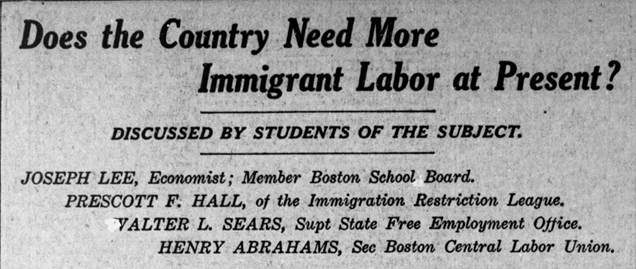
Early Jewish settlement in the United States began in the 1840s and 1850s, when German Jewish immigrants arrived with the hope of finding new opportunities. Many of these early arrivals became well established as merchants and business owners. These early immigrants experienced less systematic and social prejudice compared to that experienced by later waves of eastern and southern European Jews, who would arrive at the turn of the twentieth century.[iv] German Jewish immigrants frequently rejected the practices and behaviors associated with what they saw as “traditional” Jewish life; for their part, eastern European Jews were typically more invested in Jewish cultural practices, and they were more easily identifiable as members of Orthodox sects, such as the Hasidim. [v]
Incidents of antisemitism and nationalism began to escalate at the turn of the twentieth century as the U.S. experienced a large influx of eastern European Jews—between the years of 1881 and 1924, roughly 2.5 million eastern European Jews emigrated to the country.[vi] The September 29th, 1903 issue of the Indianapolis Journal published an article titled “Danger of Immigration,” which featured a sermon from New York Reverend Robert S. MacArthur, in which he cautioned against the influx of foreigners:
The recent marvelous expansion in American life has given a cosmopolitan character. . . . We must, however, teach the old world that it cannot empty its poorhouses and prisons by dumping its paupers, Anarchists and other criminals on American soil. American is worthy the best immigrants.
Jewish Americans feared these kinds of perceptions would grow in the public’s mind and thus took action. Jewish leaders created and expanded organizations and charities to aid Jews upon their arrival in New York. One such Jewish philanthropic organization assisted thousands of immigrants in relocating from New York to over 1,000 cities across the country.[vii] Together with this relocation initiative, community organizations—such as the Indiana Jewish Welfare Federation of Indianapolis—developed assimilation education resources intent on rapidly “Americanizing” the newcomers.
Assimilation, Acculturation, and Americanization
The concepts of “assimilation” and “acculturation” have long been central to discussions of immigration. Their definitions have continued to evolve over time, with historians and social scientists debating what it means to assimilate or acculturate.[viii] The literature on immigration typically defines acculturation as the process whereby a minority group or individual adopts elements of another cultural group and integrates them into their native cultural practices. Assimilation is an outcome of the acculturation process, in which the individual completely adopts the practices and lifestyles of another cultural group while losing those of their culture of origin.[ix]
These concepts became more mainstream at the turn of the twentieth century as the United States saw unprecedented rates of immigration. The country’s discussion was narrowed even further as the idea of “Americanization” emerged. Similar to assimilation, Americanization implied the adoption of “American” behaviors, practices, and values. What specific traits, however, identified a person as distinctly “American” versus “non-American” were difficult to pinpoint.[x]
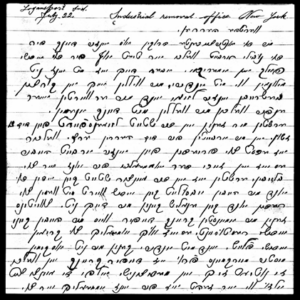
Upon their arrival in the United States, immigrants experienced culture shock in their new surroundings, regardless of their origin. For those who did not have family and friends already established in the country, it was difficult to move away from New York, as they were unfamiliar with the country and transportation systems. Outside of New York, it could be difficult to adhere to Jewish practices; Chas Graff reflected in a July 22nd, 1908 [xi] that it was impossible to find kosher meat anywhere near Logansport, Indiana (photo included). Because Jewish populations were small throughout Indiana, this issue consistently arose during the early twentieth century. Language barriers were an additional challenge, as many immigrants had limited proficiency in English. An Indianapolis Jewish immigrant named William Silberman reflected to the IRO in an undated letter, “I don’t know where to go and don’t master the English.”[xii]
Beginning in the late 1800s and gaining in popularity in the 1900s, an Americanization education movement took hold across the United States with the goal of expediting the assimilation process. A hierarchy of immigrants was established, with the light-skinned, blonde haired so-called “Old Stock” immigrants from northern and western Europe being viewed as superior to the dark-skinned southern and eastern Europeans. The former was considered to be model immigrants, known for their quick assimilation and gentile practices, while the latter were viewed as unrefined, poor-mannered individuals in dire need of education on how to “properly” behave.[xiii]
Labor: Barriers and Opportunities
At the time of this mass migration, the United States’s labor market was drastically changing. Manufacturers moved towards models of mass production, seeking to reduce employee downtime and increase production, and unions began to form to advocate for workers’ rights and workplace condition improvements. Unfortunately, many unions would not accept Jews into their organizations on the basis of not meeting a central criterion: being white.[xiv] While their predecessors, Ashkenazi German Jewish immigrants who arrived in the nineteenth century, were typically better accepted by their neighbors due to their practicing of Reform Judaism, Sephardic Jewish immigrants and Jewish immigrants from eastern Europe were more racialized. This racialization reduced opportunities for these groups, limiting what types of jobs and compensation were available to them to a greater extent than their German predecessors.[xv]
Jewish community members began to grow concerned about the gentile public’s perception of Jews changing due to these so-called ghettos. They were concerned that judgement of the new wave of immigrants would affect the livelihoods of the Jewish immigrants who had arrived years prior.[xvi] Journalistic entities were taking notice of the change, frequently publishing stories reflecting on the country’s Jewish presence. On August 8th, 1907, for instance, the Indianapolis News featured a story titled “Wave of Crime Due to Idle Immigrants.” The article suggested that immigrants in New York struggled to find and hold employment in the congested city and, as a result, the unemployed were “attacking children” because they were simply “floating around with nothing to do.” The author suggested immigrants would be of much more useful if they were sent elsewhere and utilized for labor, writing: “Now they are picking pockets, whereas if they were in the South, they would be picking cotton.”
Despite their desire to work and establish themselves in America, eastern and southern European immigrants were criticized and critiqued for their presence in the country and questioned for their work ethic. During this mass migration period, newspapers published numerous articles comparing the newcomers to previous immigrants, claiming that their predecessors were more intelligent, hardy, and industrious and “better stock.” This argument has persisted throughout history—every immigration period is met with resistance, and new arrivals are often compared to and classified as inferior to those who arrived years earlier. However, every generation of immigrants is burdened with problems similar to their predecessors. The United States continues to resist immigration today by using the same arguments as were seen in the early twentieth century, questioning the character of new arrivals, debating whether their labor was beneficial to the country, and making declarations that previous immigrants were better suited for life in America. Immigrants have historically been identified as burdens on society unless they were skilled in a trade or willing to work undesirable jobs, which has often led to their exploitation.
Many companies used this period of mass migration to exploit the labor of incoming immigrants, locking them into contracts with unlivable wages. Isaac Benjamin Cohen, a former resident of Indianapolis’s Southside, immigrated from Monastir in 1906. Upon landing at Ellis Island, Cohen was approached by representatives from a mining company, who offered him a position in Wheeling, West Virginia. Cohen accepted the offer, hoping to save up the money necessary to bring his wife and two daughters to join him in America. The work was laborious, and the wages were so little that after months of working for the company, Cohen was indebted to them and not permitted to leave. He felt that he had no choice but to escape in the night. Upon doing so, he rode a train to Chicago, where he was given word that jobs were available in Indianapolis. The Circle City provided him with better opportunities, allowing him to earn a livable wage and eventually pay for his family’s voyage to the country.[xvii]
The Industrial Removal Office
With the influx of eastern European immigrants arriving in New York, established Jewish Americans, many of them with their origins in western Europe, particularly Germany, feared the growing presence of Yiddish-speaking eastern European Jews and Sephardic southern European Jews in New York would create new waves of antisemitism, which in turn could threaten their own status as respected Americans. Beyond the concerns for their own reputations, Jewish Americans sympathized with immigrants and did not wish to see them exploited. These motivations inspired the creation of the Industrial Removal Office (IRO) in 1901.[xviii] The organization was established to aid Jewish immigrants living in New York, providing transportation and temporary support to those who were willing to resettle in smaller cities across the country.
The IRO framed its mission in terms of how immigrant relocation could benefit cities of the United States by providing needed labor and stimulating local economies. This was not a unique initiative. A handful of Jewish charities had previously attempted to relocate immigrants to agricultural communities in states like Louisiana, Oregon, Tennessee, and the Dakotas. However, these relocation programs were disorganized and typically unsuccessful in terms of long-term placements. The majority of Jewish immigrants had little knowledge about farming, lived in terrible conditions in the settlements, and preferred city life.[xix] The IRO, for its part, played to the immigrants’ strengths, placing them in cities with familiar work and supporting their establishment. It operated in a highly-organized manner and was in communication with many employers, religious leaders, and organizations throughout the country.
Upon seeking aid from the IRO, Jewish laborers were assessed on their character—the organization relocated only those immigrants whom officials deemed to be of respectable character and strong work ethic. The IRO was in constant communication with its own representatives, employers, and Jewish organizations in many major U.S. cities. The New York office received requests for laborers and would do its best to send qualified individuals—whom it called “removals” —to fill the positions. While many immigrants were eager to utilize the services of the IRO, others were hesitant to leave New York or were too frightened to pick up and move once again.[xx]

The efforts of the IRO brought many Jewish immigrants to Indianapolis and other Indiana towns such as Anderson, Evansville, Logansport, Fort Wayne, and South Bend. The IRO worked with a handful of local businesses to secure employment for removals. Because many of the new arrivals were typically well trained in the garment trades, Kahn Tailoring Company became one of the IRO’s most valuable contacts in Indianapolis.
Kahn Tailoring Company had begun as a small tailor shop in 1886 and had rapidly expanded. As the son of German Jewish immigrants, its founder, Henry Kahn, was sympathetic to the Jewish immigrants arriving in New York. He attempted to assist in their resettlement processes by collaborating with the IRO to hire skilled workers. Kahn Tailoring Company was known for not only hiring new Sephardic immigrants, in particular, but also for providing them with generous benefits and educational opportunities which may have otherwise been unobtainable.
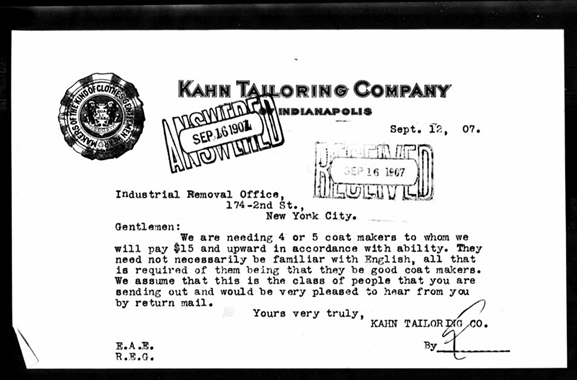
After immigrants arrived in their new cities and secured employment, IRO officials would typically provide check-ins to evaluate the success of the removal. If problems arose, the representatives would meet with the immigrant to discuss potential solutions. If a city was deemed an ill fit for the worker, the IRO would assist in relocating him to a different city. Otherwise, the IRO would hand the case off to local Jewish charities, such as the Jewish Welfare Federation (JWF) of Indianapolis, who would provide further assistance. The JWF provided translators to bridge the language barrier of many immigrants, as well as offering legal aid, monetary allowances, and allotments of physical goods, such as coal, groceries, and clothing.[xxi]
Because of the industrial nature of many of the positions filled by the IRO, removals often found themselves in dangerous workplace environments. In the case of Russian immigrant Moses Cohen, within a month of being placed in a job at Connersville, Indiana, he lost his arm to a press machine accident. Cohen had a wife and child in Russia, a child in New York, and four children in Indianapolis to support. The JWF stepped in on Cohen’s behalf to secure him a moderate settlement for the injury and to protect his employment.[xxii] This intervention provided much needed support to the Cohen family, securing Mr. Cohen’s income which may have otherwise been lost due to his permanent injury.
Not every new arrival was satisfied to work in factories, however. Many people emigrated to the United States with the hopes of becoming entrepreneurs and business owners. For the IRO removals who arrived in Indianapolis without trade skills but with dreams of self-employment, the JWF often provided loans or small allowances and encouraged peddling. In the early twentieth century, the Indianapolis streets were filled with horse-drawn wagons, pushcarts, and market stands. For some, this early peddling led to the development and establishment of full-fledged businesses.[xxiii] This was also an option for those who could no longer handle their jobs. Chas Cassalori immigrated to America in 1906 from the Ottoman Empire. He was employed as a presser at Kahn Tailoring Company in Indianapolis, but he developed severe rheumatism which made it impossible for him to work on his feet. The JWF connected Mr. Cassalori with someone who taught him the shoe trade, which allowed the man to open a shoe store at 529 Massachusetts Avenue.[xxiv]
The IRO continued its relocation efforts until its dissolution in 1922. Changes in U.S. immigration law at this time—particularly the Immigration Restriction Act of 1921—largely cut off the flow of European Jewish immigrants, reducing the need for the Office. Throughout its two decades of work, the organization assisted roughly 80,000 Jews in moving to more than 1,600 communities across the country. These communities continued to grow without the IRO’s direct involvement, as the removals’ kin and friends sought to join them after hearing of their settlement.[xxv] As a result, the IRO’s main correspondence cities developed sizable Jewish communities, rich in culture and history.
For some early twentieth century immigrants, the stress of migration, culture shock, and difficult employment was too much to handle. In July 1906, an Indianapolis man contacted the IRO, stating that a Russian immigrant by the name of Aaron Cohn was “on the verge of insanity from homesickness” and had threatened to end his life because he did not feel he could adapt to life in America.[xxvi] The IRO’s General Manager, David M. Bressler, responded that the Office had unfortunately dealt with numerous immigrants in similar situations, and that this homesickness was a “real disease” that could “be cured only by radical treatment, either by work or by return home.”[xxvii] In response to such situations, the IRO encouraged immigrants to participate in educational programs.
Community Education Initiatives
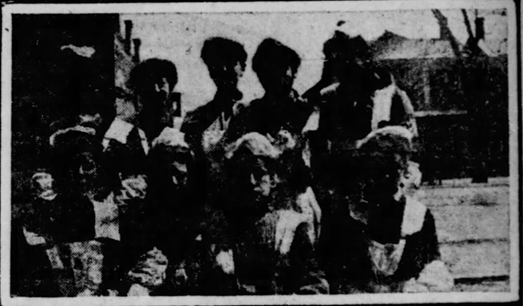
In an attempt to better support new immigrants, and to prevent a new wave of antisemitism, philanthropic organizations, particularly those run by German Jewish Americans, established initiatives to educate and Americanize eastern European Jews across the country. The mission became central to much of the Jewish philanthropic work at the time; New York’s Harmonie Club, a prestigious German Jewish social club in the U.S., which mirrored the conduct of clubs across the country, used the unofficial slogan of “More polish, less Polish” when advertising their Americanization programs.[xxviii]
Immigrant education in Indianapolis was run by a handful of charities and philanthropic organizations, including the city’s National Council of Jewish Women (NCJW), the of Indianapolis (JWF)[xxix], and the Workmen’s Circle.[xxx] On October 10, 1909, the Indianapolis Star declared the NCJW to be “among the most important local women’s organizations,” stating: “There is no club in the city that accomplishes more earnest philanthropical work than this council.”
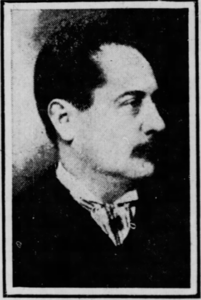
The NCJW established the Nathan Morris House with the Jewish Federation in 1904, named after a Jewish attorney who tragically perished while trying to save his nephew from a burning house. It served as both a social hub and educational settlement house for immigrants new to Indianapolis, offering classes designed to help their constituents acculturate to American life, particularly through English and American citizenship classes. It also sponsored vocational training and courses in dressmaking, millinery, typing, cooking, and dancing and held events to celebrate their patrons’ works. According to the Indianapolis News on April 28, 1905, the settlement house held a night of entertainment, featuring a play and an exhibit of hats made by its members to demonstrate the skills learned in millinery class, awarding prizes to Nellie Barrett and Ruth Rosenfield for their handiwork. The Nathan Morris House classes were of much interest to locals; the Indianapolis Journal reported on May 8, 1904 that the large number of members and their constant class attendance made it difficult to accommodate new guests.
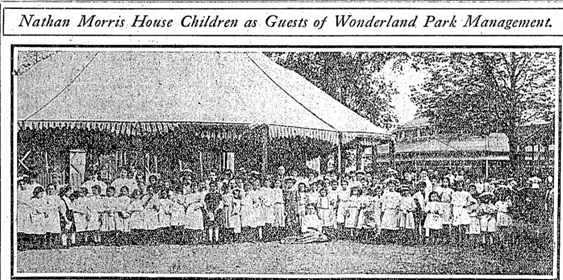
Local organizations would use the house’s meeting rooms while working with the settlement house’s patrons, such as the teachers from local kindergarten, whose monthly classes taught immigrant mothers “American child-rearing methods” and to discourage the use of “Old World” habits and patterns.[xxxi] The members had frequent social outings, which increased the settlement house’s visibility and piqued the interest of others in joining. The success of the settlement house created a shortage on space. By the end of 1912, the Jewish Federation purchased a new building with the intention of expanding community services even further. The new community center was named the Communal Building.
In 1913, the Communal Building opened on Indianapolis’s Southside. The Jewish Federation intended for the Communal Building to exist as a resource for all Indianapolis Jews, but the differing needs and interests of well-established Jewish Americans versus those of the newcomer immigrants made this goal difficult to reach. Instead of becoming a central hub to connect the city’s Jewish population, the Communal Building further divided German American Jews from eastern and southern European Jews as the former associated the building with poor, unrefined patrons.[xxxii]
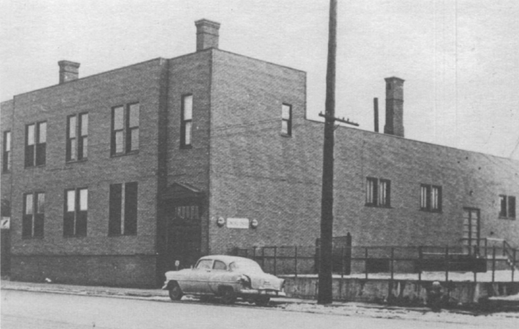
American Judaism
The Jewish Federation and NCJW constantly struggled to find a balance between integration and the retention of identity. While the philanthropic groups were pushing for immigrants to assimilate to American culture, the organization leaders hoped to preserve their patrons’ connection to Judaism. The leaders of these Jewish education initiatives did not want immigrants to abandon their religion, but instead wanted to create a new, distinctively American Jewish identity; however, they wished to build this identity from Ashkenazi Jewish traditions rather than those of the Sephardim.
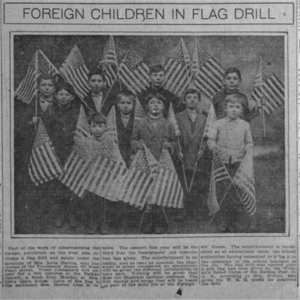
The vocalization of the necessity for Jews to assimilate often came from within Jewish communities. Fort Wayne’s Rabbi Aaron Weinstein reflected in a sermon shared in the April 13, 1919 Fort Wayne Journal-Gazette that the future of American Judaism should be “moulded by American traditions and American standards of life,” and upheld “by its moral and spiritual outlook all that is highest and best in Americanism.” Pride for the United States was deeply rooted in Americanization programs, as evident from the March 3, 1917 Indianapolis News article featuring foreign children posed with American flags as part of their Americanization education. As a result of this connection, many Jewish immigrants and their families developed a home culture intertwined with Jewish and American characteristics. In a 1981 interview with anthropologist Jack Glazier, former Indianapolis Southside resident Lee Zuckerman shared that she had a number of memories of her mother completing routine tasks, like rocking a cradle or cutting green beans, while reciting the Preamble to the United States Constitution.[xxxiii]
While the Americanization movement was intended to better acclimate immigrants to life in America, it occasionally created turmoil in communities and immigrant homes. As a result of groups like the Jewish Federation and NCJW attempting to rapidly assimilate Jewish immigrants, organization involvement discouraged and effectively erased parts the immigrants’ Sephardic cultural identities. In a May 18, 1981 interview, Vickie Goldstein, a former resident of Indianapolis’s Southside and daughter of two Sephardic immigrants, stated that she felt like she was part of a “lost generation as far as religion is concerned.”[xxxiv] A similar statement was given by Max Cohen, a member of the same generation and neighborhood as Goldstein. Cohen felt that he was never aware of the richness of his Sephardic culture growing up, only developing a true pride for his heritage and Sephardic traditions as a young adult.[xxxv] In this regard, the rapid assimilation of Sephardic Jews in Indianapolis resulted in a sense of lost culture in second and third generation Jewish Americans.
By erasing cultural markers and traditions of Jewish immigrants in the twentieth century, philanthropic leaders hoped to avoid an increase in antisemitism. Unfortunately, antisemitism has continued to evolve and gain footholds in the United States, threatening the well-being of Jewish people’s lives every day. A 2022 audit by the Anti-Defamation League reported that since the organization began tracking them in 1979, antisemitic incidents in the United States reached an all-time high in 2021. The report showed an average of more than seven incidents of assault, harassment, and vandalism every day, which is a 34% increase from 2020. It is not only antisemitism that has escalated in recent years. Hate of all kinds— against minorities and immigrants— has been fostered in the United States. According to a 2021 article by the Indy Star, hate crimes in Indiana spiked in 2020 with a 133% increase over 2019, making it the highest number of incidents in two decades. Through the 2016 presidential election, there was a steep increase of 20% in hate crimes against foreign-born minorities.[xxxvi]
The recent dramatic increase of hate crimes in the last decade is a major point of concern. The globalization of prejudice has created a sense of comfort among nationalists and, as a result, hate speech is widely expressed in the public sphere.[xxxvii] Political divides have drastically grown, and extremists have redefined the American freedom of speech as the acceptance of intolerance.[xxxviii] Social media has provided a platform for the formation of hateful spaces, allowing hate to grow through a “radicalization effect,” in which individuals can avoid real-life repercussions for hateful behavior due to online anonymity.[xxxix] Organizations like the Anti-Defamation League (ADL) and the Southern Poverty Law Center work tirelessly to combat this national growth of hate, documenting and exposing hate crimes and seeking justice for targeted victims.[xl]
America has long been dubbed a “nation of immigrants,” yet it has never been a nation truly welcoming of newcomers. Immigrants at the turn of the twentieth century were heavily scrutinized for their foreign characteristics and encouraged to leave behind their “Old World” values if they wished to fit into American society. They were assigned value based on their skills and willingness to work in poor conditions. Despite the passing of a century, immigrants today are burdened with the same barriers as their predecessors. The documentation of early twentieth century immigration experiences provides Americans with the opportunity to learn from the past. Philanthropic organizations urged early Jewish immigrants to rapidly assimilate to their new surroundings in order to avoid new waves of antisemitism. Many immigrants lost their traditions and heritage as a result, yet the antisemitic hate nonetheless persisted. By avoiding this narrative in the future, immigrants have the chance to retain and celebrate their heritage, making America a true nation of immigrants.
For a bibliography, click here.
Notes:
[i] Sephardic Jews trace origins to the Iberian Peninsula prior to the Inquisition. After 1492, some of these Jews were invited by the Sultan of the Ottoman Empire, Sultan Beyezid II, to settle in those lands. The first Sephardic immigrants to Indianapolis arrived from cities that are now in North Macedonia and Greece, in the early decades of the twentieth century.
[ii] Daniel Jonah Goldhagen, The Devil That Never Dies: The Rise and Threat of Global Antisemitism (New York, NY: Little, Brown and Company, 2013), 7-21.
[iii] Karen Brodkin, How Jews Became White Folks and What That Says about Race in America (New Brunswick, NJ: Rutgers University Press, 2010), 26.
[iv] Robert Rockaway, Words of the Uprooted: Jewish Immigrants in Early Twentieth-Century America (Ithaca, NY: Cornell University Press, 1998), 5-6.
[v] Jack Glazier, Dispersing the Ghetto: The Relocation of Jewish Immigrants Across America (East Lansing: Michigan State University Press, 2005), 6-12.
[vi] Jack Glazier, “‘Transplanted from Kiev to Hoosierdom’: How the Industrial Removal Office Directed Jewish Immigrants to Terre Haute,” Indiana Magazine of History 97, no. 1 (2001): 5.
[vii] Glazier, Dispersing the Ghetto, 16-17; Robert Rockaway, Words of the Uprooted, 29-30.
[viii] Russel A. Kazal, “Revisiting Assimilation: The Rise, Fall, and Reappraisal of a Concept in American Ethnic History,” American Historical Review 100, no. 2 (1995): 437.
[ix] Kazal, “Revisiting Assimilation,” 465-467; Robert A. Carlson, “Americanization as an Early Twentieth-Century Adult Education Movement,” History of Education Quarterly 10, no. 4 (1970): 440.
[x] Kazal, “Revisiting Assimilation,”468-470; Carlson, “Americanization,” 444.
[xi] Letter from Chas Graff [translated by IRO], 22 July, 1908, U.S., Industrial Removal Office Records, 1899-1922, Box 97, Folder 21, Series X: Correspondence of Immigrants, (1901-1921), Ancestry.com, accessed www.ancestry.com/search/collections/1613/.
[xii] Letter from William Silberman, n.d., U.S., Industrial Removal Office Records, 1899-1922, Box 97, Folder 18, Series X: Correspondence of Immigrants, (1901-1921), accessed Ancestry.com.
[xiii] Carlson, “Americanization,” 440-441.
[xiv] Broadkin, “Global Capitalism,” 241-242; Irwin Yellowitz, “Jewish Immigrants and the American Labor Movement, 1900-1920,” American Jewish History 71, no. 2 (1981): 189.
[xv] Glazier, “Transplanted,” 5; Broadkin, “Global Capitalism,” 241-242.
[xvi] Ibid., 6.
[xvii] Gladys Cohen Nisenbaum, interview by Jack Glazier, January 20, 1981.
[xviii] Rockaway, Words of the Uprooted, 1-3, 13-14; Glazier, “Transplanted,” 2-5, 15-16.
[xix] Rockaway, Words of the Uprooted, 7-8.
[xx] Ibid., 19-20; Glazier, “Transplanted,” 5-6.
[xxi] Jewish Federation of Indianapolis Records, 1880-Ongoing, Boxes 264-268, Collection # M0463, Indiana Historical Society, Indianapolis, IN.
[xxii] Cohen, Moses and Simmie. 1912-1916. [Federation Documentation]. Jewish Federation of Indianapolis Records, 1880-Ongoing, Box 264, Folder 5, Collection # M0463.
[xxiii] Jewish Federation of Indianapolis Records, 1880-Ongoing, Boxes 264-268, Collection # M0463.
[xxiv] Cassalori, Charles “Chas” and Masolto (1913-1918). [Federation Documentation]. Jewish Federation of Indianapolis Records, 1880-Ongoing, Box 264, Folder 5, Collection # M0463.
[xxv] Rockaway, Words of the Uprooted, 27, 32; David Bressler, “Distributing Immigrants Throughout America,” Jewish Tribune, December 18, 1914, 6.
[xxvi] Letter to David M. Bressler from Sol. Kiser, 25 July,1906, U.S., Industrial Removal Office Records, 1899-1922, Box 97, Folder 18, Series X: Correspondence of Immigrants, (1901-1921), accessed Ancestry.com.
[xxvii] Bressler Response to Sol. Kiser, 27 July, 1906, U.S., Industrial Removal Office Records, 1899-1922, Box 97, Folder 18, Series X: Correspondence of Immigrants, (1901-1921), accessed Ancestry.com.
[xxviii] Gerald Sorin, “Mutual Contempt, Mutual Benefit: The Strained Encounter Between German and Eastern European Jews in America, 1880-1920,” American Jewish History 81, no. 1 (1993): 35.
[xxix] This organization was established with the name “Jewish Welfare Federation of Indianapolis.” It is later referred to as the “Jewish Federation of Indianapolis” in documentation, though it is unclear when this name change occurred.
[xxx] Judith E. Endelman, The Jewish Community of Indianapolis, 1849 to the Present (Bloomington, IN: Indiana University Press, 1984), 71-72.
[xxxi] Endelman, Jewish Community, 93.
[xxxii] Richard Moss, “Creating a Jewish American Identity in Indianapolis: The Jewish Welfare Federation and the Regulation of Leisure, 1920-1934,” Indiana Magazine of History 103, no. 1 (2007): 46-47.
[xxxiii] Lee Cohen Zuckerman, interview by Jack Glazier, May 4, 1981.
[xxxiv] Vickie Calderon Goldstein, interview by Jack Glazier, May 18,1981.
[xxxv] Max Cohen, interview by Jack Glazier, April 18,1981.
[xxxvi] Jonathan Weisman, (((Semitism))) (New York, NY: St. Martin’s Press, 2018), 194-195.
[xxxvii] Goldhagen, The Devil, 163.
[xxxviii] Weisman, (((Semitism))), 21.
[xxxix] Deborah E. Lipstadt, Antisemitism: Here and Now (New York, NY: Schocken Books, 2019), 35; Weisman, (((Semitism))), 107-111, 121.
[xl] Weisman, (((Semitism))), 218.
